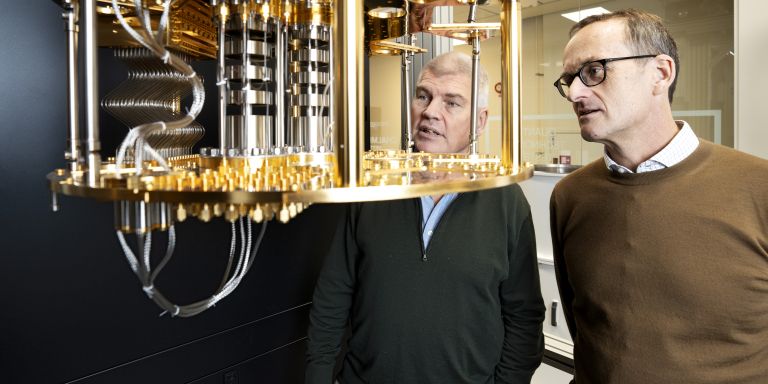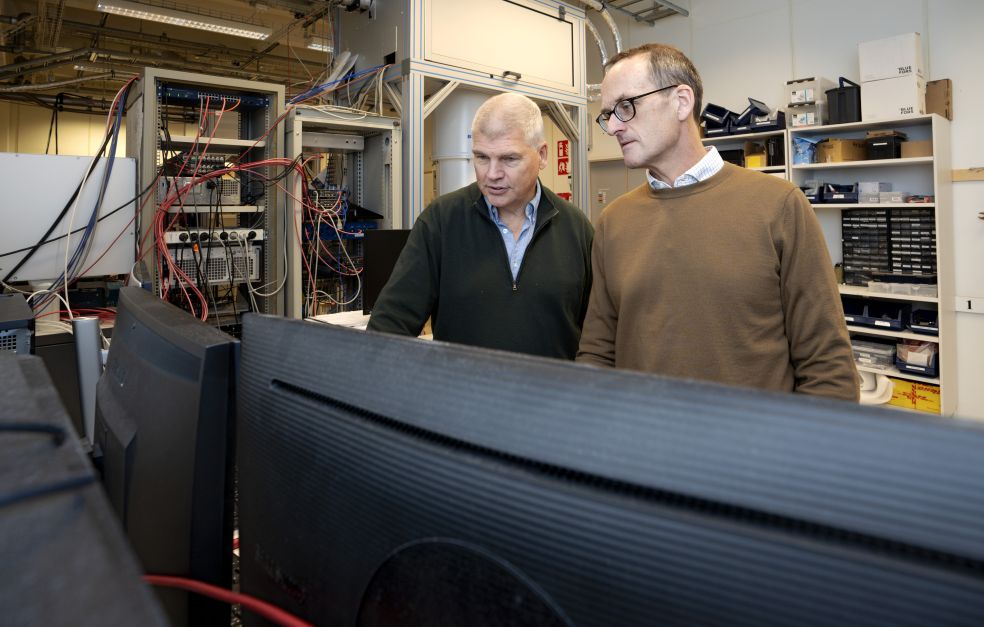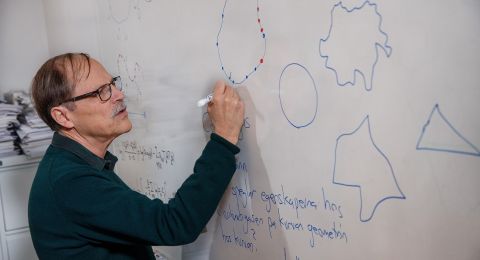
WACQT
Wallenberg Centre for Quantum Technology, WACQT, is a hub and a national research program focusing on four areas of quantum technology.
The goal is to establish long-term robust expertise in this field, in both Swedish academia and industry, by building a 100-qubit quantum computer based on superconducting circuits.
Chalmers University of Technology is responsible for quantum computations and simulations. KTH Royal Institute of Technology oversees quantum communication and encryption. Lund University is developing quantum sensors. The program is coordinated by Chalmers.
Website:
WACQT
Grant:
SEK 1.4 billion during 2018 – 2030
The WACQT research program was established in 2018, with the aim of securing Sweden’s expertise in the rapidly growing field of quantum technology. The prime objective is to create a 100-qubit quantum computer. Quantum technology will potentially open doors to eavesdropping-proof communication, hypersensitive measuring instruments, and more efficient drug development.
Substantial progress has been made since the program began, notes Per Delsing, Professor of Physics at Chalmers University of Technology and WACQT Program Director until the end of 2024. A crucial milestone was reached in 2024 when the research team successfully created a 25-qubit quantum processor.
“This is a major step toward creating a 100-qubit quantum computer, given that we have solved many of the problems necessary to integrate qubits on a larger scale,” he says.
Growing knowledge and awareness
Göran Johansson, Professor of Theoretical and Applied Quantum Physics at Chalmers, from 2025 leads WACQT. He believes that a fantastic foundation for the initiative has been established under Delsing’s leadership and regards the research program as unique in many ways.
“This forward-looking initiative by Knut and Alice Wallenberg Foundation is of huge importance for Sweden as a research nation and industrial force. Since 2018 the program has built extensive knowledge, paving the way for Swedish industry to occupy a leading position in emerging technology,” he says.
WACQT, coordinated by Chalmers, rests on four pillars of quantum technology. Chalmers is responsible for quantum computing and simulations, and is where the computer is actually being built. Lund University handles quantum sensors, and KTH Royal Institute of Technology is working on quantum communication.
“Over 200 researchers in Sweden are currently working on quantum technology. We have enrolled about one hundred PhD students at the WACQT graduate school, and have successfully recruited more than 10 WACQT Fellows: young researchers who have established their own research teams. It’s incredibly exciting,” says Delsing, who has seen a dramatic increase in knowledge in the field since the program started – within and outside the academic world.
“There is much greater awareness of the potential of quantum technology in industry, politics and society. I believe WACQT has contributed to this: raising expertise in quantum technology is one of our missions, and we have succeeded.”
Qubit quality matters
In a quantum computer each qubit must be understood and controlled while the entire system must interact and communicate. This means that construction becomes increasingly complex as more qubits are connected.
“Each qubit has its own tone or frequency, and we need to understand all the properties of each one. We have solved 3D integration – how to access and control all the qubits, including those deep inside the processor on the chip. The next step is to pair up all neighboring qubits, enabling them to ‘talk’ to each other. We’re not quite there yet, but we have a clear plan and path forward,” says Delsing.
I often say that figuring out how best to utilize the opportunities created by quantum technology is a research field all of its own.
Not only the number of qubits, but their quality, is critical to how powerful the quantum computer will be.
“It’s essential that the qubits are coherent, i.e., they retain their quantum mechanical properties as long as possible. The lifespan of qubits impacts the length of the algorithms and how many operations can run before errors occur. Our qubit quality is cutting-edge – we’re close to state-of-the-art,” says Johansson.
Industrial collaboration vital
Close collaboration with industry was established during the first years of the program. Knowledge developed under WACQT has generated several patents and spin-off companies, largely thanks to WACQT-IP, a company founded to assist in commercializing research results.
Robust partnership with industry remains a priority for the program moving forward. A testbed for Swedish industries which hosts a copy of the 25-qubit quantum computer was created at Chalmers in 2024, with a view to solve problems with quantum technology.
The testbed includes a Quantum Helpdesk to guide users, and test equipment for companies developing quantum components. The quantum computer will open for algorithm testing in 2026.
“We want to lower the threshold for using quantum computers and look forward to welcoming companies wishing to take advantage of this opportunity,” says Johansson.
He points out that WACQT has also created a basis for leading fundamental research in quantum technology.
“We won’t know how to utilize quantum processors until we achieve full-scale error correction. This requires a deep and broad understanding of how hardware, all necessary software, and problem formulation interrelate. WACQT gives us a unique opportunity to build this expertise in an open academic environment.”
Numerous potential applications
A quantum computer performs calculations in entirely different ways than current supercomputers, and since it can process huge quantities of data, there are far more opportunities and potential solutions to various problems. Researchers predict that quantum computers will be able to address many societal challenges, although how this will work in practice remains an open question.
“I often say that figuring out how best to utilize the opportunities created by quantum technology is a research field all of its own. Quantum computers have the potential to solve many optimization problems, but that is probably some way off. Initially, I think we will see other applications, particularly in quantum sensors, for more efficient measuring methods and diagnostics,” says Delsing.
“Yes – health and life sciences are areas where quantum computers can make a real impact,” adds Johansson.
Both men highlight the risks associated with the vast computational capacity of quantum computers in the wrong hands.
“A quantum computer could crack critical codes in various sectors of society. Sweden’s military authorities are already aware of the importance of secure quantum communication, but other sectors, such as healthcare, power supply and banking and finance will also need greater expertise to manage these risks,” says Delsing.
WACQT concludes in 2030. Both Delsing and Johansson believe the goal – an advanced 100-qubit quantum computer – will be achieved by then.
“With the foundation and expertise that the program has established, we are well-positioned to achieve our goal,” says Johansson.
Text: Ulrika Ernström
Translation: Maxwell Arding
Photo: Johan Wingborg





